
The Emerging Necessity of Low-E Glass Film in Kansas City Homes
In the dynamic climate of Kansas City, where the weather transitions from blistering hot summers to chillingly cold winters, residents are encountering an increasingly prevalent issue within their homes: energy inefficiency. Central to this challenge is the performance of conventional windows, which significantly impacts a home’s temperature regulation and energy consumption. The advent of low-e glass film in Kansas City presents a promising resolution, though, surprisingly, many homeowners remain unaware of its groundbreaking benefits.
Energy inefficiency in household windows is not merely a minor inconvenience; it is a glaring issue that contributes to exorbitant utility bills and a larger carbon footprint. Traditional windows without low-e glass film allow for the free flow of heat, failing to keep the warmth inside during winter and outside during summer. This inefficiency necessitates a greater reliance on heating and cooling systems, which not only drives up energy costs but also exacerbates environmental degradation.
The adoption of low-e glass film is vital as we move towards a more energy-conscious and environmentally friendly society. Its ability to reflect heat while still letting light pass through revolutionizes the way homes in Kansas City manage temperature and energy use. Yet, the potential of this innovative solution to reshape home energy efficiency significantly remains largely underexploited. As awareness grows, the question arises: How can we further educate Kansas City homeowners about the transformative impact low-e glass film can have on their homes and the environment?
Introducing the Heat Efficiency Challenge in Kansas City Homes
In the bustling urban landscape of Kansas City, a silent yet significant issue lurks in many homes – inefficient energy usage due to poor insulation and outdated windows. The primary concern lies in the excessive heat transfer through windows, which results in higher energy bills and a less comfortable living environment. With the region experiencing both sweltering summers and freezing winters, the need for a solution that maintains indoor temperature without overreliance on heating and cooling systems has never been more critical.
Many homeowners are unaware of the potential of low-E glass film as a cost-effective and efficient solution to this problem. The issue stems from the lack of knowledge about how low-E glass film can not only conserve energy but also protect against harmful UV rays, thus enhancing the overall livability of Kansas City homes. This knowledge gap leaves many residents facing unnecessary high energy costs and contributing to greater energy consumption than needed. Addressing this issue could lead to significant improvements in energy efficiency and comfort for homeowners throughout the region.
Eye-Opening Facts About Energy Loss in Kansas City Homes
Many homeowners in Kansas City might not realize the extent of energy loss through their windows, which highlights the critical need for Low-E glass film. Surprisingly, windows can account for up to 30% of total heat loss in a home during colder months. In summer, the same windows allow excessive heat to enter, increasing cooling requirements by up to 40%. Coupled with Kansas City’s diverse climate, where temperature swings are common, the energy inefficiency of standard windows places a significant burden on both the environment and homeowners’ utility bills. Adopting Low-E glass film becomes not just an upgrade but a necessity for sustainable living.
The Problem with Inefficient Windows in Kansas City Homes
For homeowners in Kansas City, the selection of window films or glass is not just a matter of aesthetics but a crucial aspect of their home’s energy efficiency and comfort. The core issue stems from utilizing windows lacking low-e glass film—a technology designed to minimize the amount of infrared and ultraviolet light that comes through your glass without compromising the natural light entering your home. Without this protective layer, Kansas City residents face several daunting challenges.
Standard glass windows significantly contribute to heat gain and loss in homes, making it difficult to maintain comfortable interior temperatures. This is particularly problematic given Kansas City’s diverse climate, with hot summers and cold winters. In the summer, windows without low-e coatings allow an excessive amount of solar heat to enter, forcing air conditioners to work harder and increasing energy bills. Conversely, in the winter, the same windows let out a substantial amount of the heat generated indoors, leading to higher heating costs and energy inefficiency.
This not only affects homeowners financially through skyrocketing energy bills but also impacts environmental comfort within the home. The reliance on heating and cooling systems becomes a ceaseless cycle, as they struggle to compensate for the inefficient barrier that standard windows provide against external temperatures. The problem is further exacerbated by the increasing energy rates, making this an unsustainable situation for many homeowners.
In essence, the absence of low-e glass film in Kansas City homes presents a problem that extends beyond mere financial burdens. It affects the livability and sustainability of one’s living environment, necessitating a proactive approach to window efficiency improvements.
Understanding the Problem with Regular Glass in Kansas City Homes
Living in Kansas City means experiencing a unique blend of weather patterns, ranging from sweltering summers to frigid winters. This wide range in temperatures isn’t just a topic of conversation; it profoundly affects the comfort and energy efficiency of homes throughout the region. The core issue at hand is the use of regular, untreated glass in windows and doors, which plays a significant role in these challenges.
Traditional glass fails to provide adequate insulation during the winter and allows excessive heat to enter during the summer. This inadequacy results in uncomfortable indoor temperatures, excessive reliance on heating and cooling systems, and, consequently, skyrocketing energy bills. Homeowners may not immediately recognize that their choice of window glass is a pivotal factor in these discomforts and expenses. Understanding the problem is crucial: energy inefficiency and comfort issues stem significantly from the type of glass used in homes, underscoring the need for a superior solution like low-e glass film, especially designed for the climatic demands of Kansas City.
Transforming Comfort and Efficiency: A Kansas City Home’s Journey with Low-E Glass Film
In Kansas City, a family experienced constant discomfort due to excessive heat and glare in their living room, making it nearly impossible to enjoy their space during sunny days. After installing low-e glass film, not only did they notice an immediate difference in temperature and brightness, but their energy bills also decreased significantly over the next few months. This real-life example underscores the effectiveness of low-e glass film in enhancing home comfort and efficiency, proving it as a vital upgrade for homeowners in Kansas City facing similar issues.
The Cost of Ignoring Low-E Glass Film Benefits in Kansas City Homes
Deciding against the adoption of Low-E glass film in Kansas City residences can lead to several adverse effects that homeowners may not initially foresee. Failing to recognize the importance of this upgrade can impair not just the comfort but also the financial efficiency of one’s home.
Firstly, ignoring the energy-saving benefits of Low-E glass film can lead to significantly higher utility bills. The untreated windows allow for excessive heat transfer, making heating and cooling systems work overtime to maintain comfortable indoor temperatures. This inefficiency directly translates to increased energy consumption and costs.
Moreover, the comfort levels within the home can be markedly reduced. The absence of Low-E glass film means exposure to more UV rays and glare, which can degrade the quality of life indoors by causing discomfort and potential damage to skin and furnishings over time.
Choosing to overlook the Low-E glass film solution not only affects the homeowner’s pocket through higher utility bills but also impacts daily living comfort. It’s a decision that carries both immediate and long-term consequences, urging homeowners to consider the installation of Low-E glass film as a priority for an efficient and comfortable living space.
Economic Impact of Not Utilizing Low-E Glass Film in Kansas City Homes
Not investing in low-e glass film for Kansas City residences can significantly impact homeowners’ economic security. Without the advanced insulation properties of low-e glass film, homeowners might face higher energy bills due to the increased use of heating and cooling systems. This can add up over time, straining household budgets, especially during extreme weather conditions prevalent in the area. Additionally, homes without energy-efficient upgrades like low-e glass film may have a lower resale value, affecting the long-term financial planning of property owners. Making this simple upgrade can thus have profound long-term economic benefits.
Transform Your Home with Low-E Glass Film in Kansas City
In the bustling heart of the Midwest, Kansas City homeowners face the perennial challenge of maintaining comfortable, energy-efficient homes amidst fluctuating weather conditions. From sweltering summers to frigid winters, maintaining optimal indoor temperatures can often result in skyrocketing utility bills. Low-E glass film emerges as a beacon of hope, directly addressing these concerns with a solution that is both effective and economical.
Low-E (low emissivity) glass film is a marvel of modern technology designed to enhance the energy efficiency of existing windows without the need for complete replacements. By reflecting infrared and ultraviolet light, this innovative film keeps homes cooler in the summer by blocking out unwanted solar heat. Conversely, it retains indoor heat during the winter, ensuring that homes stay warm without overburdening heating systems. This dual-action capability directly tackles the primary issue of energy waste, leading to significant reductions in heating and cooling costs for Kansas City residents.
Beyond its profound energy-saving benefits, Low-E glass film also protects against UV damage, preserving the life and vibrant colors of interior furnishings. This added layer of protection extends the life of valuable personal and household items, providing peace of mind and further contributing to the overall cost-effectiveness of the solution.
The utility of Low-E glass film in enhancing home livability and efficiency is unmatched. It accurately positions itself as a critical remedy for Kansas City homeowners looking to mitigate the impact of harsh weather conditions while also aspiring to achieve a more sustainable lifestyle. With its simple installation process and immediate benefits, Low-E glass film stands out as a smart investment for anyone aiming to enhance their home’s comfort and energy efficiency.
Unlocking Home Comfort with Low-E Glass Film in Kansas City
Low-E glass film emerges as a game-changing solution for Kansas City homeowners keen on elevating their living comfort and reducing energy costs. This innovative product directly addresses the challenges posed by the city’s varying climate, from sweltering summers to icy winters, by enhancing the efficiency of existing windows.
Unlike traditional glass, which struggles to keep up with extreme temperatures, low-E glass film acts as a thermal blanket. It reflects interior temperatures back inside during the winter and keeps the scorching sun at bay during the summer. This dual action not only maintains comfortable indoor environments year-round but also cuts down on the energy needed for heating and cooling, leading to substantial savings on utility bills.
Moreover, the application of low-E glass film is a non-intrusive process that preserves the aesthetic appeal of homes while upgrading their functionality. Homeowners can enjoy the benefits of advanced thermal insulation and UV protection without the need for costly window replacements. This makes low-E glass film an accessible and efficient solution for enhancing home comfort and sustainability in Kansas City.
Benefits and Features: Low-E Glass Film in Kansas City
Low-E glass film is revolutionizing how Kansas City homeowners enhance their home’s efficiency and comfort. This innovative solution boasts several key benefits and features. The most prominent advantage is its ability to reduce energy costs by improving window insulation, thus keeping homes warmer in winter and cooler in summer. It also blocks harmful UV rays, protecting your furniture from fading and minimizing sun damage. Additionally, Low-E glass film increases privacy and adds an extra layer of security, making it harder for windows to shatter. Opting for Low-E glass film is a smart choice for anyone looking to upgrade their home’s performance and aesthetic appeal.
Success Stories: Enhancing Comfort in Kansas City with Low-E Glass Film
In Kansas City, homeowners are discovering the remarkable benefits of upgrading to Low-E glass film, illustrated by the enthusiastic feedback from the Harper family. After noticing their living room was significantly warmer than the rest of the house, they decided to install Low-E glass film on their large south-facing windows. The result was astonishing; not only did the room become more comfortable, but their energy bills also saw a noticeable decrease. The Harpers were thrilled with the improvement, stating, “It’s like we’ve given our old home a new lease on life without any major renovations. Our living room is finally usable in the summer without cranking the AC.”
Another success story comes from the Patel family, who were initially concerned about their fading furniture and hardwood floors due to direct sunlight. After the installation of Low-E glass film, they observed a significant reduction in UV radiation damage. They shared, “We couldn’t believe the difference it made. Our floors and furniture look preserved, and the glare on our TV screen is gone. It’s the best home improvement decision we’ve made for both our home’s aesthetics and our comfort.”
Case Study: Maximizing Home Comfort and Efficiency with Low-E Glass Film in Kansas City
In the vibrant neighborhood of Brookside, Kansas City, the Carter family decided to retrofit their charming bungalow with low-E glass film to combat the harsh summer heat without compromising their home’s historical aesthetic. The installation was a game-changer. Not only did it significantly reduce their cooling costs by blocking out excessive sunlight and UV rays, but it also protected their treasured interior furnishings from fading. During one of Kansas City’s notorious heatwaves, the Carters found their home to be a cool oasis, setting a new standard of living comfort within their community. This upgrade not only demonstrated the effectiveness of low-E glass film in enhancing home comfort but also underscored its role in energy conservation. Ready to transform your home into a more efficient and comfortable living space? Contact us today to explore how low-E glass film can work for you!


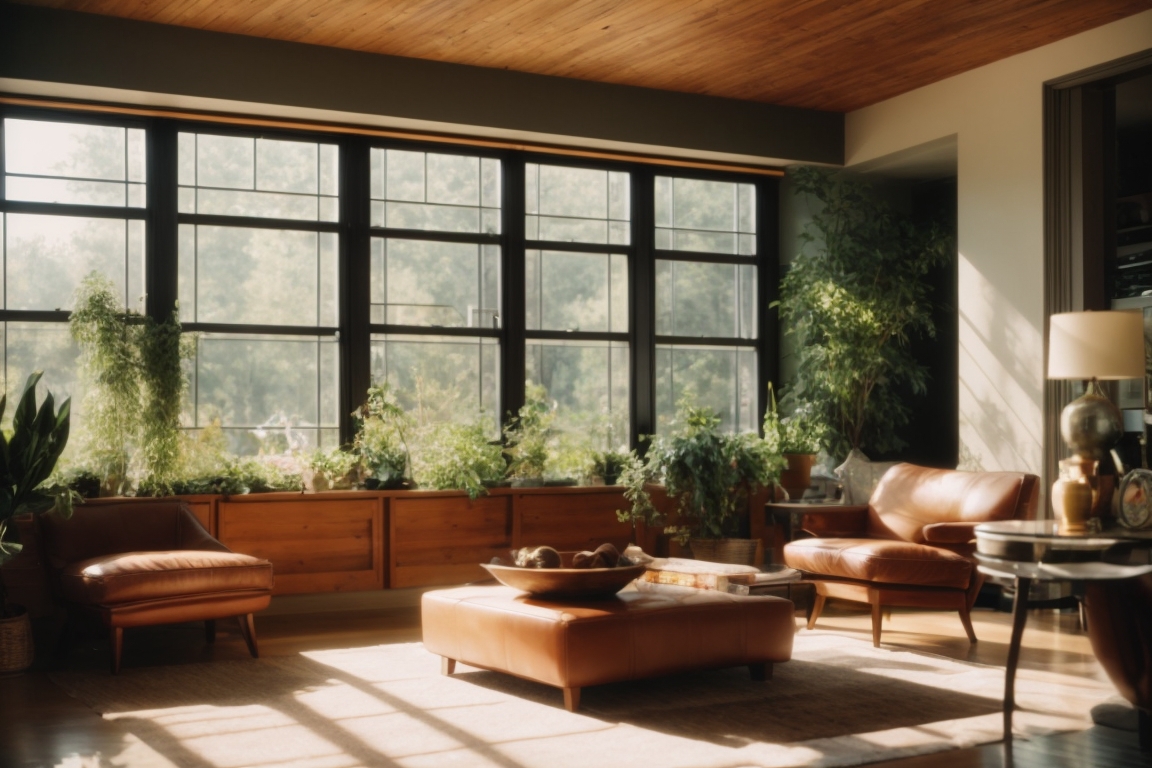
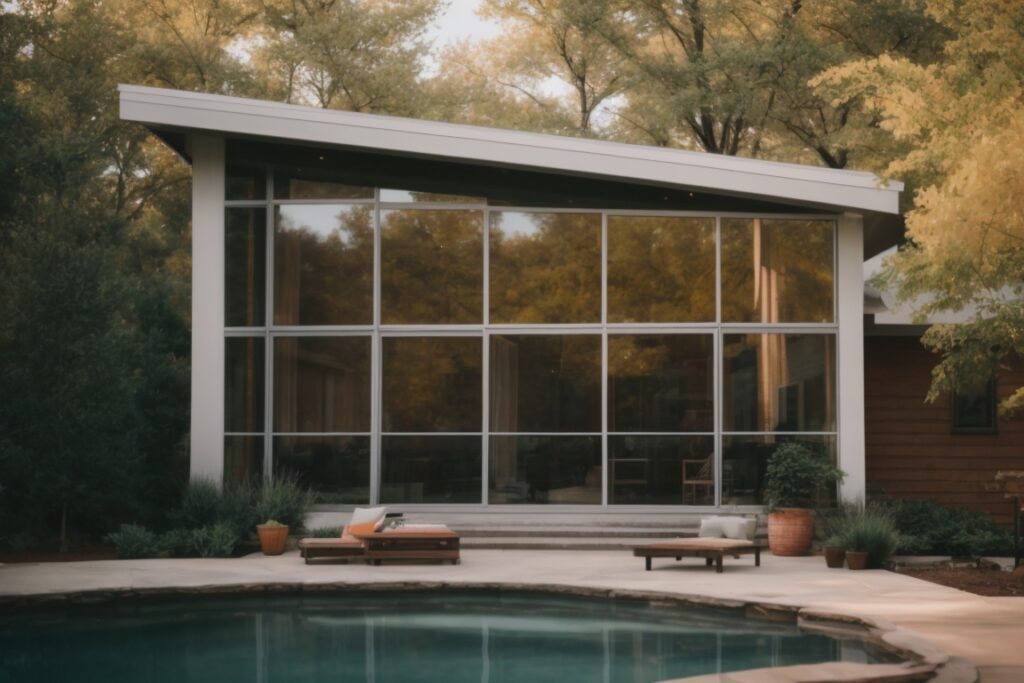
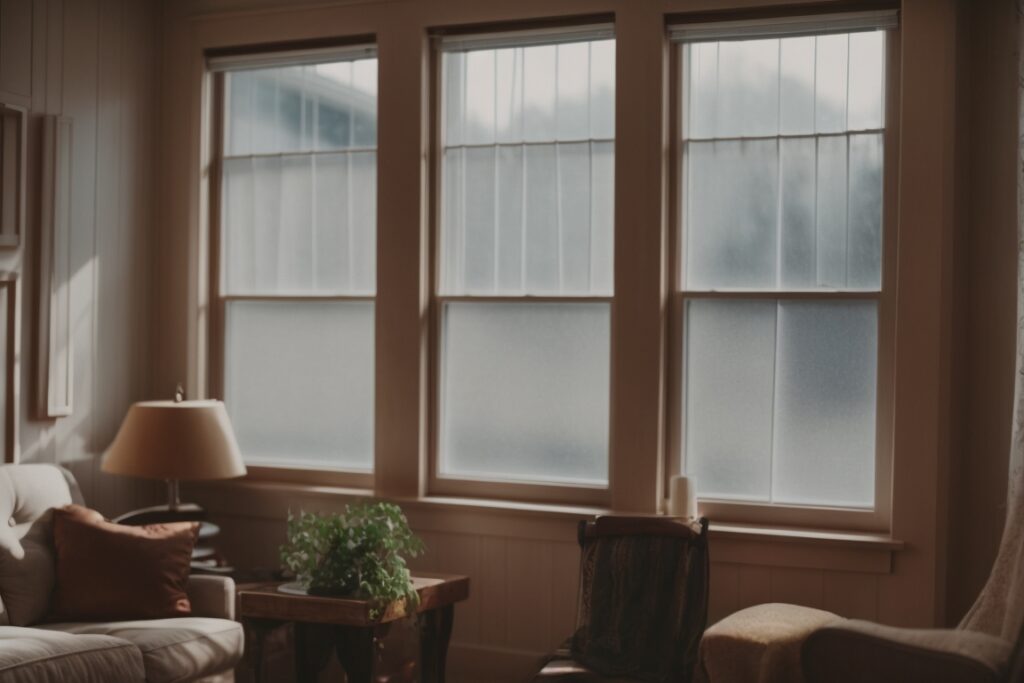
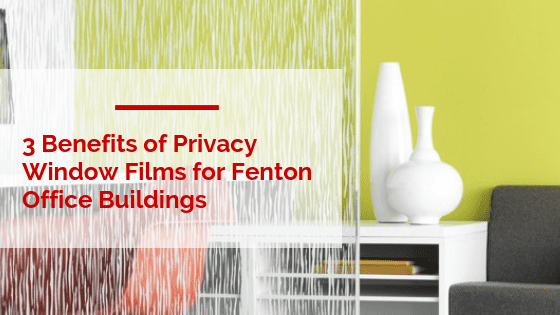
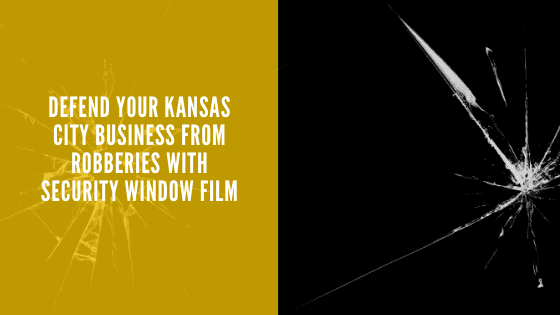
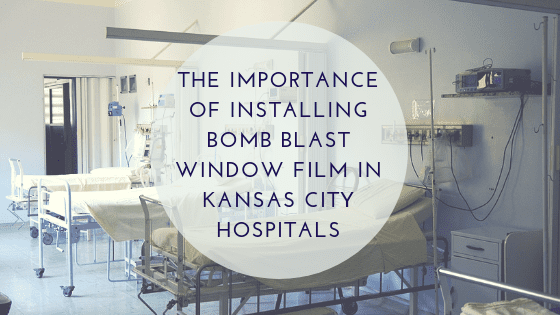
About The Author: Mike Kinsey
For over ten years, Mike Kinsey has been working as a consultant, project manager, sales advisor, and expert technician for commercial window film installs in the Kansas City metro area. His ability to successfully execute large scale and complex commercial and industrial projects has given him a reputation as one of the most trusted experts in his field. In addition to his eye for detail and extensive product knowledge, Mike brings with him a unique perspective to every project due to his extensive background in the construction industry. Together, he and his team have successfully installed over 250,000 square feet of window film. With certifications from 3M, EnerLogic, and AIA for continuing education, Mike is a subject matter expert and one of the most accomplished professionals in the industry.
More posts by Mike Kinsey